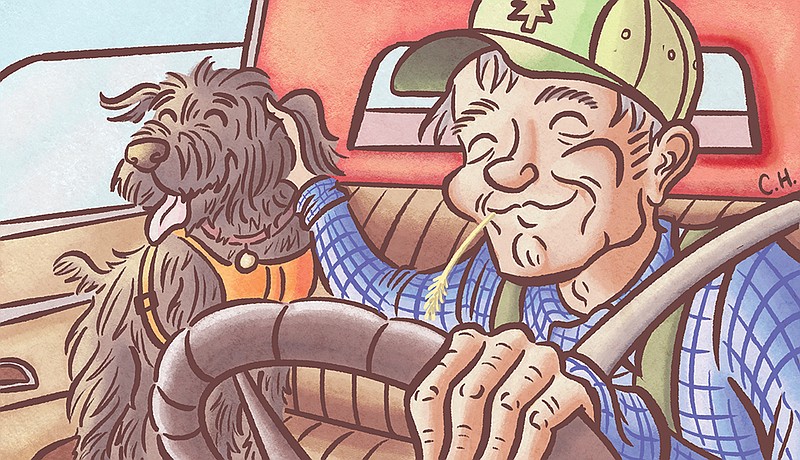Q I was driving behind a pickup truck that swerved to avoid a deer. A dog in the bed of the pickup was thrown out and badly injured.
Thank goodness he didn't strike my windshield, and I didn't hit him. Still, the experience taught me that it's dangerous to transport a dog in the bed of a pickup. Is it also illegal?
A Regrettably, it's illegal in only a few states to transport an unsecured animal in an open vehicle, such as the bed of a pickup truck or a top-down convertible.
[Arkansas law does not specifically prohibit transporting a dog in the bed of a pickup. But ACA 5-62-103, "Offense of cruelty to animals," makes it a misdemeanor offense to "carry or cause to be carried in or upon any motorized vehicle or boat an animal in a cruel or inhumane manner." Penalties can include fines, jail time or community service, a psychiatric or psychological evaluation, treatment if determined to be appropriate, and paying for those tests and treatment.]
The practice is unsafe for animals and drivers. If the dog leaps, falls or is thrown from a pickup truck, oncoming drivers instinctively swerve to miss him, which can cause other problems.
I've treated many dogs hurt this way, and all had broken bones or other serious, painful injuries. One young Newfoundland that jumped out an open car window suffered permanent nerve damage to a front leg that required amputation.
Putting a dog in the back of an open pickup truck on a hot day also subjects him to sunburn and burns to his paws from the hot metal bed. Other hazards are rain, snow, tree branches and road debris that hits the dog's eyes at the speed the vehicle is moving.
Leashing doesn't help. Dogs leashed in the back of a pickup have been strangled or dragged behind the truck by their leashes.
The safest way for a dog to ride in a pickup is buckled into a seatbelt harness in the cab.
If a dog must be in the pickup's bed, the dog should be in a well-ventilated kennel with solid top and sides to ward off debris.
The kennel, which must be firmly anchored to the truck, should be large enough for the dog to stand and lie down comfortably but not so large that he'll get tossed around if the driver swerves or brakes hard.
Everyone should check their state's laws, and consider lobbying for stronger legislation to protect animals and drivers.
Q My doctor prescribed Effexor for my depression and anxiety, which has worsened during the pandemic. I left one pill on the counter, and my cat Sunshine ate it. She is now being treated at the animal hospital.
Sunshine once needed an oral antibiotic, and she fought me when I tried to pill her. What would make her jump onto the counter and swallow an unflavored pill intended for people?
A No one knows, but veterinary toxicologists report that cats are attracted to Effexor, known generically as venlafaxine, and readily eat it. Not surprisingly, it's a common cause of poisoning in cats.
Even a single pill of the lowest strength available is very dangerous to a cat.
Toxic signs include dilated pupils, loss of balance, nausea, regurgitation, agitation and vocalization, elevated blood pressure, racing heart with abnormal rhythm, rapid breathing, tremors and seizures. These problems can persist for days.
Thank you for reminding people to secure all medications in cabinets or drawers. Even childproof containers are no barrier to determined cats and dogs with teeth.
Best wishes for Sunshine's speedy recovery.
Celia Storey added information to this column.
Lee Pickett, VMD, practices companion animal medicine in North Carolina. Contact her at

